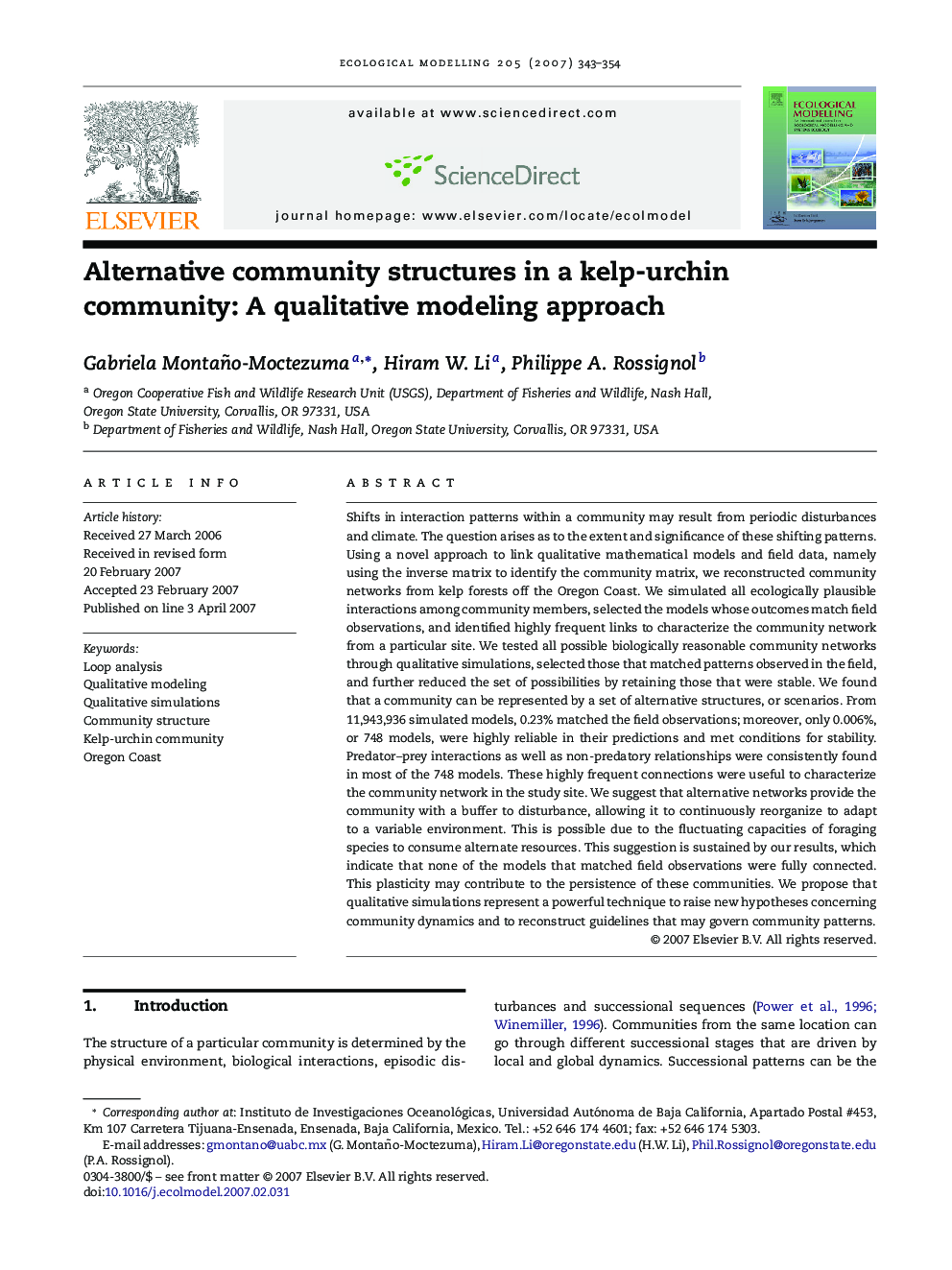| کد مقاله | کد نشریه | سال انتشار | مقاله انگلیسی | نسخه تمام متن |
|---|---|---|---|---|
| 4378755 | 1617546 | 2007 | 12 صفحه PDF | دانلود رایگان |

Shifts in interaction patterns within a community may result from periodic disturbances and climate. The question arises as to the extent and significance of these shifting patterns. Using a novel approach to link qualitative mathematical models and field data, namely using the inverse matrix to identify the community matrix, we reconstructed community networks from kelp forests off the Oregon Coast. We simulated all ecologically plausible interactions among community members, selected the models whose outcomes match field observations, and identified highly frequent links to characterize the community network from a particular site. We tested all possible biologically reasonable community networks through qualitative simulations, selected those that matched patterns observed in the field, and further reduced the set of possibilities by retaining those that were stable. We found that a community can be represented by a set of alternative structures, or scenarios. From 11,943,936 simulated models, 0.23% matched the field observations; moreover, only 0.006%, or 748 models, were highly reliable in their predictions and met conditions for stability. Predator–prey interactions as well as non-predatory relationships were consistently found in most of the 748 models. These highly frequent connections were useful to characterize the community network in the study site. We suggest that alternative networks provide the community with a buffer to disturbance, allowing it to continuously reorganize to adapt to a variable environment. This is possible due to the fluctuating capacities of foraging species to consume alternate resources. This suggestion is sustained by our results, which indicate that none of the models that matched field observations were fully connected. This plasticity may contribute to the persistence of these communities. We propose that qualitative simulations represent a powerful technique to raise new hypotheses concerning community dynamics and to reconstruct guidelines that may govern community patterns.
Journal: Ecological Modelling - Volume 205, Issues 3–4, 24 July 2007, Pages 343–354